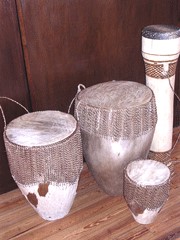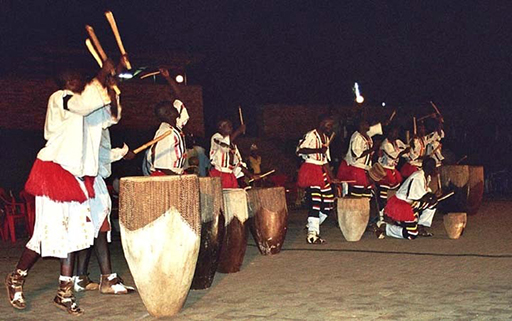Resource 2: Local traditions
![]() Background information / subject knowledge for teacher
Background information / subject knowledge for teacher
Ngoma drums from Uganda
The Ngoma are commonly used in the Eastern part of Africa in Uganda, Kenya, Tanzania, Rwanda, Burundi and parts of the Democratic Republic of Congo. Uganda is thought to be the country where this type of drum actually originated.
The Ngoma is very important in the life of people in Uganda and the Baganda are called children of the drum. This is because the Ngoma plays such a big part in the day-to-day life of the people. The Ngoma, like all other African drums, is used for communication and celebration but is also a symbol of authority.
The Ngoma is made of wood and then covered with mainly cow skin all around it. The drums are made to different sizes and they are played in groups of seven. Each drum has a specific function and they all speak in different voices. However, sometimes a group of four drums will be used to produce equally great rhythms. The major drums in this case will be Embutu, Empunyi, Nankasa and Engalabi. Engoma is the big drum, which produces a loud lead sound similar to the open sound on the djembe. The Empunyi is another big drum, which produces the base sound, and the Nankasa is a small drum played using sticks – it produces a very high tone.
Then you have the Ngalabi, which is a long drum with an opening at the base. It has a head covered with lizard skin and it produces a dry crisp sound similar to the slap sound on the djmbe. Together these four drums will produce fabulous resonance to push anyone off their seats to dance.
All the drums mentioned above are played with hands apart from the small Nankasa, which is played with sticks.


Resource 1: Stories of the Venda drum



